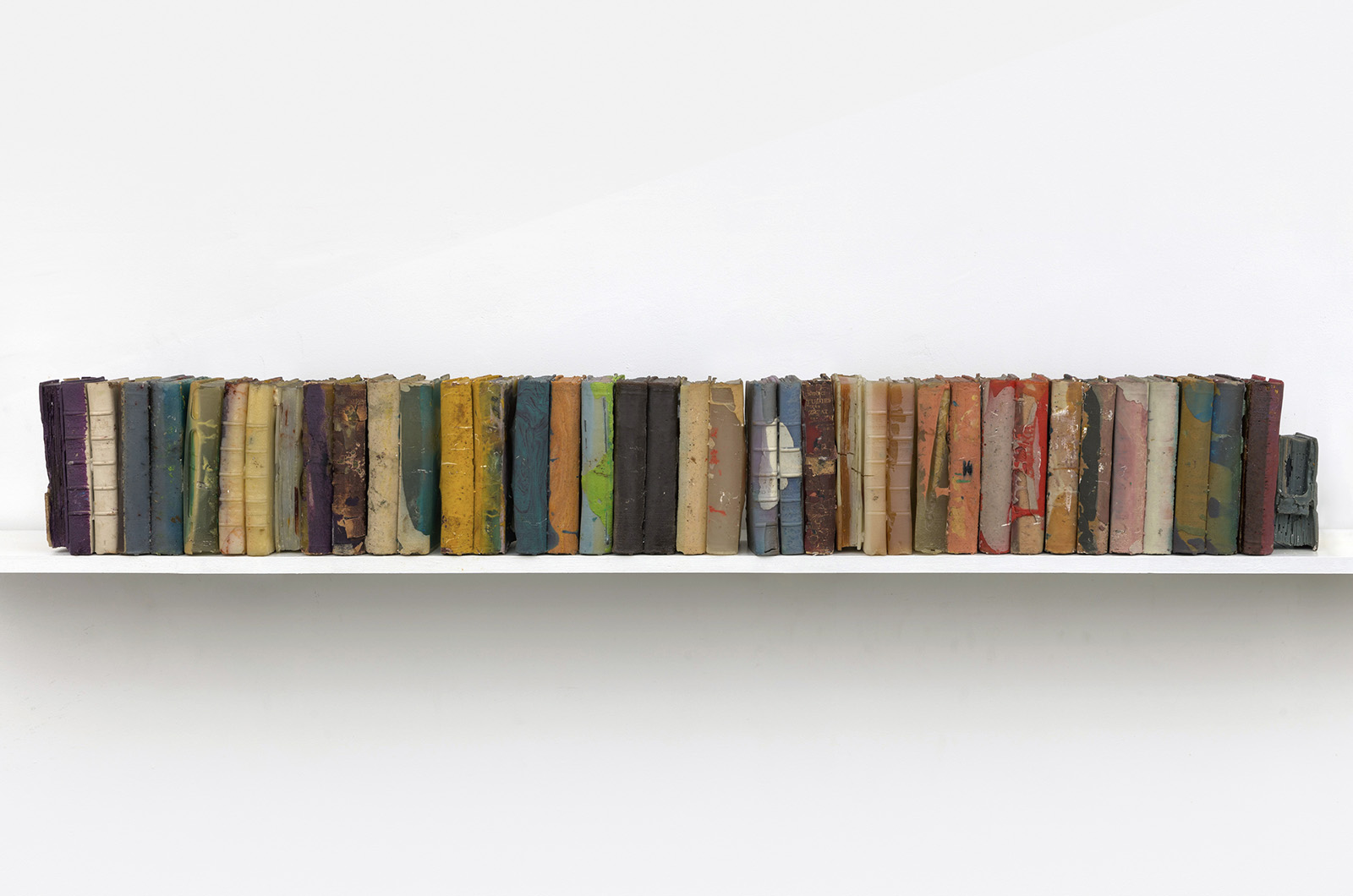Stella Waitzkin often sat in a folding chair at Lucy Vincent Beach. She would close her eyes and listen to the swell of the waves. She felt the winds from across the dunes. She absorbed the energy, the sounds and smells of the ocean.
They were material for her art, her son Fred Waitzkin said.
“Her sculpture is wild and raw, her work is all rough edges,” he said. “She wasn’t a neat artist. She believed in letting the imagination flow off the canvas.”
That wild and raw art is being celebrated again with an exhibit at the Slag Gallery in New York city, curated by Craig Hensala. The exhibit is called These Books Are Paintings and features pieces from the 1970s to the 1990s, highlighting Ms. Waitzkin’s work with cast resin books.
She died in 2003 at the age of 83. These Books Are Paintings opened on Feb. 2 and continues through March ll.
Her artwork is in the collections of the Smithsonian, the National Gallery of Art, the Walker Art Center, the Detroit Institute of Arts, the Museum of Modern Art, the Jewish Museum and the New York Public Library.
Ms. Waitzkin split her time between West Tisbury and New York city, and her art was influenced by both locations. She first moved to New York from a suburb on Long Island in the 1950s when progressive jazz, poetry and art were exploding all over the city. It was the era of the Beats and the abstract expressionists, gathering at clubs, the Cedar Street Bar and the Chelsea Hotel, where Ms. Waitzkin lived for a time.
“Her life was about music, poetry and art,” Fred Waitzkin said.
Mr. Hensala said she was engaged with the ideas, innovations and artists of her time in New York.
“Stella was very charismatic, entertaining and amusing,” Mr. Hensala said. “She was a performer and a storyteller.”
In the 1970s, she began layering glass objects and melting them. The thin films of glass fell on top of each other, like the pages of a book, which gave her the idea to use books in her art, Mr. Hensala said.
The current exhibition features casts from old leather books with textured spines. Some stand by themselves and some are grouped together. Numerous copies of Dante’s The Divine Comedy are lined up as if they are on a shelf ready to be opened. At the very end of the row is a bust of the character Beatrice, who is the narrator’s guide in the last part of the poem. In this way, the piece tells a new story, not about Dante, but about Beatrice’s role in the classic story.
“When I think about the work, I think a part of it is reinvention,” Mr. Hensala said. “Stella has taken this thing, that was once a book, that’s not a book anymore. She’s made an alternate reality that makes us question our reality, where we are, and what these objects mean.”
Fred Waitzkin recalled a night when his mother invited Allen Ginsberg over for dinner. Mr. Ginsberg arrived carrying a bag with a manuscript of his latest poems. He excitedly showed them to Stella who held them and looked at them before telling him, “You know, Allen, words are lies.” It was a common phrase for her. In an artist’s statement she is quoted as saying: “I make the books to get away from the word. When I make the books, I feel like I’m telling folk stories; it’s all there inside the book.”
Stella Waitzkin: These Books Are Paintings will be at the Slag Gallery, 522 West 19th street, N.Y. through March 11.










Comments
Comment policy »